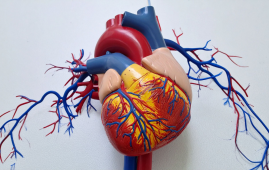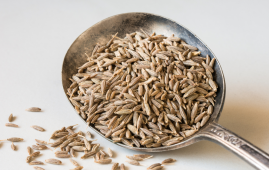

A new study found a greater prevalence of myocardial scarring in young males following COVID-19 mRNA vaccination, raising concerns regarding long-term effects despite modest early symptoms of vaccine-associated myocarditis.
In a recent study published in EClinicalMedicine, a team of scientists from the United States (U.S.) examined the longitudinal outcomes and clinical characteristics of coronavirus disease 2019 (COVID-19) vaccine-associated myocarditis, or C-VAM, and evaluated the risk of myocardial injury and cardiovascular outcomes caused by C-VAM in the pediatric population and young adults.
Background
The quick development of COVID-19 vaccinations has helped to restrict the spread and severity of SARS-CoV-2 illnesses, as well as to mitigate the COVID-19 pandemic.
One type of COVID-19 vaccine commonly utilized in the United States was the messenger ribonucleic acid (mRNA) vaccine, which uses a copy of the viral mRNA that encodes a viral protein, such as the SARS-CoV-2 spike protein, to elicit a sustained immune response.
Myocarditis is an uncommon consequence of the COVID-19 mRNA vaccination, particularly among children. Furthermore, cardiac magnetic resonance (CMR) images with late gadolinium enhancement (LGE) are increasingly being employed to analyze the chronic scarring and myocardial damage that occur in cases of infantile myocarditis.
About the study
In the current study, the researchers investigated the cardiac characteristics of C-VAM based on LGE found in CRM pictures and assessed the clinical aspects and cardiovascular outcomes of C-VAM in a cohort of young adults, adolescents, and children.
This retrospective observational study was undertaken at 38 institutions in the United States. The study included people under the age of 30 who were diagnosed with acute myocarditis after receiving the COVID-19 mRNA vaccination.
Acute myocarditis was diagnosed using aberrant biomarkers, clinical symptoms, and cardiac imaging. Individuals having alternative diagnoses of myocarditis were excluded from the study.
The researchers gathered demographic information, medical history, and hospital records from the subjects. Based on the vaccination roll-out phases, participants were divided into two age groups: younger and older, corresponding to ages 5 to 15 and 16 to 30 years, respectively.
They also compared juvenile myocarditis patients to another pediatric COVID-19 consequence called multisystem inflammatory syndrome in children (MIS-C).
The researchers examined a variety of clinical biomarkers, including C-reactive protein (CRP) and erythrocyte sedimentation rate (ESR), to detect systemic inflammation; brain natriuretic peptide (BNP) and N-terminal pro-B-type natriuretic peptide, which indicate heart failure; and troponin levels, which detect heart damage.
Furthermore, CMR scans and Holter monitoring results were analyzed for signs of hyperemia, scarring, damage, and myocardial edema.
A panel of specialist cardiologists cross-verified the CMR scan results, and LGE and other imaging parameters were utilized to determine the extent of myocardial injury.
The researchers next conducted statistical studies to look into the relationship between LGE in CMR images and patient variables. In addition, arrhythmia, cardiac symptoms, heart failure, transplantation, and mortality were investigated.
Results
The study discovered that the bulk of the C-VAM patients were adolescents, with 95% receiving the Pfizer-BioNTech mRNA vaccine.
In contrast, the remaining 5% received the Moderna COVID-19 mRNA vaccine. Myocarditis symptoms typically occurred after the second dosage of the vaccination, including increased troponin levels and chest discomfort in 96% of patients.
The patients often developed symptoms within a week following immunization, and the majority of them (90%) required hospitalization for close to three days.
Only 2% of hospitalized patients needed mechanical breathing or inotropic support. Furthermore, no patients tested positive for SARS-CoV-2 infection, required a heart transplant, or died.
Nearly 60% of the patients exhibited abnormal electrocardiograms (ECG), with 17% having mild ventricular systolic dysfunction. Additionally, nearly 72% of the patients’ CMR scans revealed evidence of LGE and myocardial edema.
LGE was more common in older and male patients, and elevated levels of CRP and troponin were linked to an increased risk of LGE as well as a decrease in left ventricular ejection fraction.
C-VAM patients were older and more likely to be male than MIS-C patients. Furthermore, whereas MIS-C patients had higher levels of systemic inflammation and required more intensive care than C-VAM patients, myocardial scarring was more severe, and LGE was more prevalent in C-VAM patients.
Conclusions
Overall, the findings revealed that C-VAM had milder clinical characteristics and was more prevalent in older male adolescents following the second dose of the mRNA vaccine.
However, the ongoing presence of cardiac scarring raises concerns regarding C-VAM’s long-term consequences, emphasizing the need for additional study into the effects of LGE in C-VAM patients.
For more information: Jain, S. S., Anderson, S. A., Steele, J. M., Wilson, H. C., Muniz, J. C., Soslow, J. H., Beroukhim, R. S., Maksymiuk, V., Jacquemyn, X., Frosch, O. H., Fonseca, B., Harahsheh, Ashraf S, Buddhe, S., Ashwath, Ravi C, Thacker, D., Maskatia, Shiraz A, Misra, N., Su, J. A., Siddiqui, S., & Vaiyani, D. (2024). Cardiac manifestations and outcomes of COVID-19 vaccine-associated myocarditis in the young in the USA: longitudinal results from the Myocarditis After COVID Vaccination (MACiV) multicenter study. EClinicalMedicine, 76. doi:10.1016/j.eclinm.2024.102809.
more recommended stories
 Citrus and Grape Compounds Help Prevent Type 2 Diabetes
Citrus and Grape Compounds Help Prevent Type 2 DiabetesA new clinical trial highlights the.
 Genetic Diversity Explains Obesity Risk Differences
Genetic Diversity Explains Obesity Risk DifferencesCross-ancestry Study Identifies Novel Obesity Genes.
 Meniscal Tear and OA Pain Improved by Home Exercise
Meniscal Tear and OA Pain Improved by Home ExerciseHome Exercise Proves Effective for Knee.
 AI ECG Model Outperforms Standard STEMI Triage
AI ECG Model Outperforms Standard STEMI TriageNovel AI ECG Model Outperforms Standard.
 New Software Transforms Real-Time Pathogen Surveillance
New Software Transforms Real-Time Pathogen SurveillanceReal-Time Pathogen Surveillance Software Transforms Environmental.
 Cannabis Use Linked to Regular Tobacco in US Youth
Cannabis Use Linked to Regular Tobacco in US YouthCannabis Use and Tobacco Risk: A.
 Mediterranean Diet Reduces Endometriosis Risk in Women
Mediterranean Diet Reduces Endometriosis Risk in WomenMediterranean Diet and Endometriosis: A Promising.
 Night Shifts May Trigger Irritable Bowel Syndrome (IBS)
Night Shifts May Trigger Irritable Bowel Syndrome (IBS)Night Shifts and Digestive Health: Linking.
 Caraway seed chemistry yields anticonvulsant leads
Caraway seed chemistry yields anticonvulsant leadsA team led by UNLV researchers.
 WHO and EU Strengthen Digital Health in Africa
WHO and EU Strengthen Digital Health in AfricaThe World Health Organization (WHO) and.

Leave a Comment